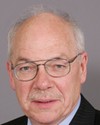To my satisfaction, yes.
Evidence of meeting #7 for Citizenship and Immigration in the 39th Parliament, 1st Session. (The original version is on Parliament’s site, as are the minutes.) The winning word was safe.
Evidence of meeting #7 for Citizenship and Immigration in the 39th Parliament, 1st Session. (The original version is on Parliament’s site, as are the minutes.) The winning word was safe.
3:45 p.m.
Chairperson, Immigration and Refugee Board of Canada
It's very important, as one would know. I mean, we live and die by decisions and we live and die by appointments.
3:45 p.m.
Liberal

Andrew Telegdi Liberal Kitchener—Waterloo, ON
I'm sure you must have put your mind to it at some point--how many people would you need for a refugee appeal division?
3:45 p.m.
Chairperson, Immigration and Refugee Board of Canada
We did some early work in preparation when the act was passed. Roughly we're talking about maybe 20 decision-makers, plus support staff. Roughly I would think 70 people at the maximum.
3:50 p.m.
Conservative
3:50 p.m.
Bloc

Johanne Deschamps Bloc Laurentides—Labelle, QC
Good afternoon, Mr. Fleury. I'm sorry for being late.
Perhaps you mentioned this earlier, but I would like to know if there has been a decrease in the records processing resources over the past few years.
3:50 p.m.
Chairperson, Immigration and Refugee Board of Canada
Yes. But you would need to go back three years. Three years ago, the government allocated $10 million to us, but we had to justify this amount from one year to the next, bearing in mind that we had to deal with the issue of security and the fact that we had quite a sizable backlog. We received this $10 million amount for three years.
3:50 p.m.
Bloc

Johanne Deschamps Bloc Laurentides—Labelle, QC
Given that you managed to reduce this backlog despite a reduction in resources, would it be possible to provide the committee with some background on this backlog on a regional office basis?
3:50 p.m.
Chairperson, Immigration and Refugee Board of Canada
Certainly.
In answer to your question, we had to reduce staff once the $10 million were no longer available. Employees were advised that there was little work, and most of them found work elsewhere. That has not been easy.
3:50 p.m.
Bloc

Johanne Deschamps Bloc Laurentides—Labelle, QC
Given that you lost resources, can you explain how you still managed to reduce your backlog?
3:50 p.m.
Chairperson, Immigration and Refugee Board of Canada
We have more tools available, thanks to the action plan. We worked on five plans. First, we examined all the research documents that we had and our capacity to address the needs. We examined the stats of the hearing process, in order to see if we could be more efficient.
Pursuant to the act, the chairperson may issue guidelines concerning the procedure that applies to hearings or country requirements. We worked on this. We tried to further improve professional development.
We must not forget that this action plan was developed by the employees and by decision-makers who knew where we could find solutions to improve our approach to working. That's the huge secret behind this initiative. Had we hired an outside consultant, there would have been no way out and it would have cost millions of dollars.
So this was done internally. People started to say that if we did things in such and such a fashion and if we had such and such tool, perhaps we could be better organized. Consequently, with regard to decisions, we have increased productivity by 30 per cent the first year and 20 to 25 per cent the second year.
3:50 p.m.
Bloc

Johanne Deschamps Bloc Laurentides—Labelle, QC
And in light of this reduction in the backlog, what has been so far the percentage of claims being rejected?
3:50 p.m.
Chairperson, Immigration and Refugee Board of Canada
The percentage of rejected claims has not changed over the past three years. It varies between 42 per cent, 44 per cent and 46 per cent. Last year, it was 46 per cent. That is the acceptance rate. I should be able to provide you with the rejection rate.
3:50 p.m.
Bloc

Jean-Yves Laforest Bloc Saint-Maurice—Champlain, QC
Could you give us an idea of how you can ensure some quality consistency in the processing of claims?
3:50 p.m.
Chairperson, Immigration and Refugee Board of Canada
A great deal of money is invested. First, I will talk about the three levels that allow us to ensure that we are constantly up to date. We have a cutting-edge legal department, staffed with individuals who have been with us for nearly 15 years. So the whole legal approach has been refined. We can provide the decision-makers with decision summaries to help them.
Second, the United Nations has recognized our research department as one of the best. It is excellent.
I have talked about research and lawyers; there's also professional development. We invest in professional development and training. We are developing a number of other organizations.
I have never been able to provide an exact figure in this regard, however the minimum amount we spend for the decision-makers is equal to 7 per cent of payroll. I don't think I am mistaken. It's a lot.
3:55 p.m.
NDP

Bill Siksay NDP Burnaby—Douglas, BC
Thank you, Mr. Chair, and thanks, Mr. Fleury, for being here yet again.
Mr. Fleury, to follow up on the consistency question, that is a concern that is often raised by folks who observe the refugee appeal process. You talked about the research background you have, but is there any kind of test carried out by the commission to test the consistency of decisions? Do you make comparisons of decisions, and what does that research show?
3:55 p.m.
Chairperson, Immigration and Refugee Board of Canada
They're not researchers, but we have coordinators for every team of 12 people rendering decisions, and we have...even legals will do some reading of decisions and help us.
I hadn't finished, because there was more to it in terms of quality and cohérence décisionnelle. We have special days devoted to a country condition. We'll have speakers from outside to talk about a country, or specialists will come and talk to us about country conditions or situations they know about--and they're specialists.
So there's a one-day development a month, and then there are special days by country, by region. In other words, the three regions, Vancouver, Toronto, and Montreal, are linked together, and we will discuss Mexico and look at past decisions. We cannot influence or try to influence decision-makers in any way, shape, or form. However, what we want to do is have the mutual understanding of the condition of the country, so we invest a lot of time in those situations--we have to--with the result that the difference between countries in the three regions is now so low that we have only one country that could have about a 30% difference. The rest would remain within 10%.
3:55 p.m.
Chairperson, Immigration and Refugee Board of Canada
No, we don't have targets. It's a way of monitoring. It's a way of knowing if something is going awry or maybe some interpretations.... I'm quite satisfied with what we do there.
3:55 p.m.
Chairperson, Immigration and Refugee Board of Canada
I don't have it, but I could certainly give it to you.